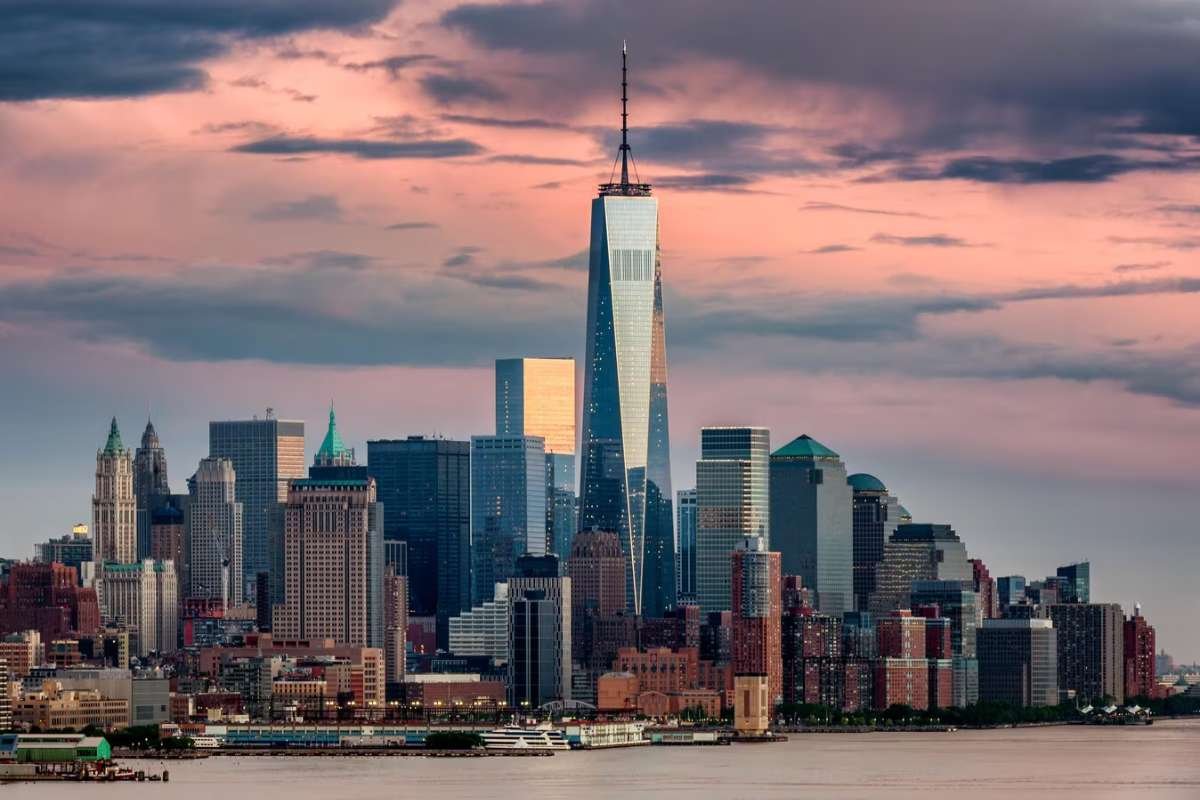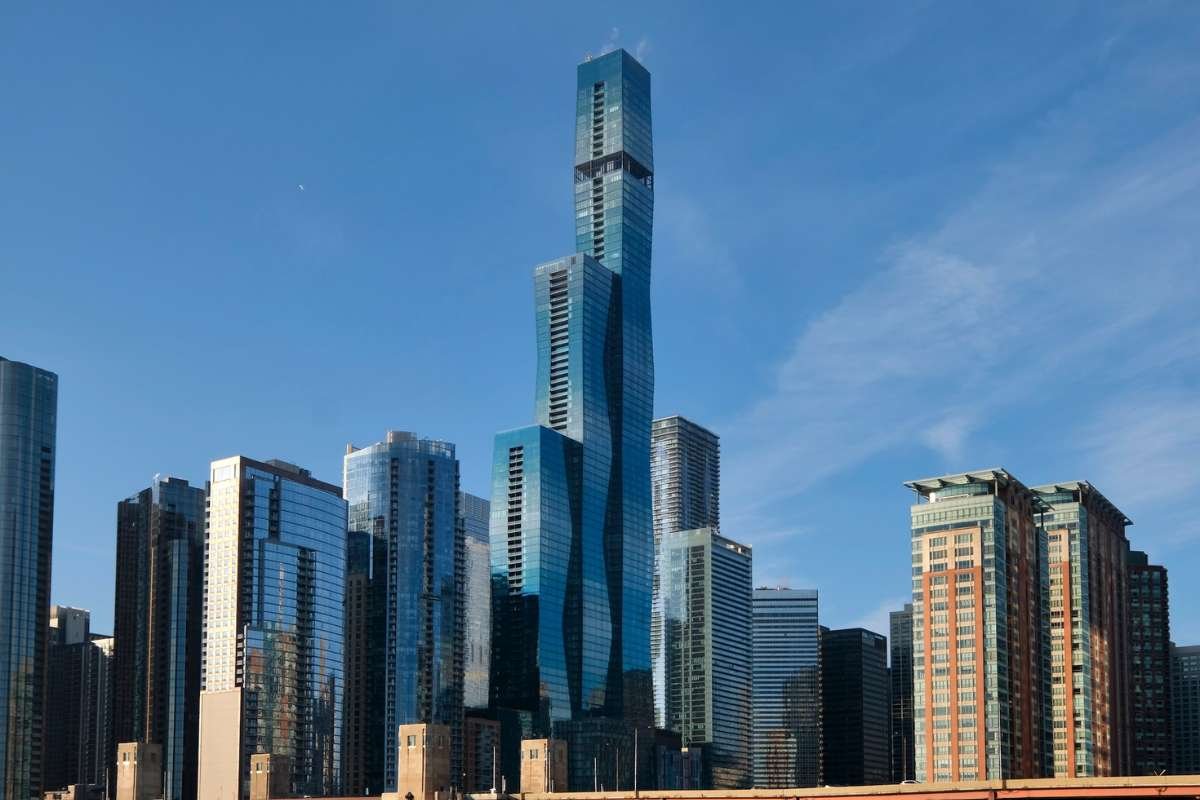Tallest Skyscrapers in North America: Icons of Modern Architecture
- Source: www.youtube.com
Historically, skyscrapers have represented advancement, ambition, and design skill, and none more so than in North America, where cities like New York, Chicago, and Toronto are home to some of the most impressive and vertical buildings in the world. These extraordinary towers dominate the skyline and represent the economic significance, engineering capability, and cultural values of the region.
This article will provide an overview of the tallest skyscrapers in North America while covering the design, height, purpose, and influence on urban identity.
1. Central Park Tower – New York City, USA
Standing at a staggering 1,550 feet (472 meters), Central Park Tower claims the title of one of the tallest skyscrapers in North America. Completed in 2020 and located along Manhattan’s Billionaires’ Row, this ultra-luxury residential building boasts 98 stories and offers some of the most expensive apartments in the world.
Designed by Adrian Smith + Gordon Gill Architecture, the tower not only pierces the sky but also offers panoramic views of Central Park and the Manhattan skyline. With amenities like a private club, outdoor terrace, wellness center, and ballroom, the tower is the epitome of modern luxury.
2. Willis Tower (formerly Sears Tower) – Chicago, USA
Once the tallest building in the world, the Willis Tower held its global title for 25 years after its completion in 1973. Reaching a height of 1,451 feet (442 meters) to its roof and 1,729 feet (527 meters) including antennas, it remains the second-tallest skyscraper in North America by architectural height.
Located in the heart of downtown Chicago, this 110-story structure serves as a hub for business and tourism. Its Skydeck, located on the 103rd floor, is a popular attraction, featuring “The Ledge”—a glass balcony that lets visitors step out over the city below.
3. One World Trade Center – New York City, USA

Designed by architect David Childs, the tower features 104 floors of office space and a three-level observation deck. It’s clad in shimmering glass and tapers elegantly as it rises—a thoughtful nod to the original Twin Towers. It’s not just a structure; it’s a tribute to strength, unity, and recovery.
Also Read: Statue of Liberty: A Symbol of Hope and Promise
4. The St. Regis Toronto – Toronto, Canada
At 912 feet (278 meters) tall, the St. Regis Toronto (formerly the Trump International Hotel and Tower) is one of the tallest skyscrapers in North America outside the United States. This 65-story mixed-use building offers hotel services, condominiums, and luxurious amenities in the financial heart of Toronto.
What makes it unique is its combination of classic architectural styling with modern luxury. A sharp spire crowns the building, adding an extra element of visual height and elegance. This tower represents Canada’s commitment to staying competitive on the international architectural stage.
You Must Read: The Best Cities to Live in the United States: 2025 Edition
5. Vista Tower (St. Regis Chicago) – Chicago, USA

Combining residential, hotel, and retail functions, it offers breathtaking views of the Chicago River and Lake Michigan. Vista Tower is an example of how sustainable design and sculptural beauty can merge in the heart of a bustling city.
6. The Skyscraper Boom: What’s Driving It?
Several factors are fueling the rise of the tallest skyscrapers in North America. Urban densification, rising land prices, technological advances, and a growing appetite for vertical luxury living are reshaping skylines. Developers are no longer just aiming for height—they’re also pushing the envelope in terms of design, sustainability, and function.
- Technology: Advanced materials and engineering methods now allow buildings to be taller, lighter, and more energy-efficient.
- Urban Planning: Mixed-use designs are increasingly popular, integrating retail, residential, and office spaces in one vertical community.
- Cultural Significance: Skyscrapers serve as landmarks, symbols of national pride, and economic indicators.
7. Honorable Mentions: Pushing the Limits

- 432 Park Avenue, NYC – 1,396 feet (425 meters): A minimalist yet controversial design that has become a symbol of ultra-wealth.
- copyright Tower, NYC – 1,200 feet (366 meters): A LEED-certified sustainable tower that exemplifies modern eco-conscious construction.
- Tour CIBC, Montreal – 670 feet (204 meters): While modest in height, it remains a staple in Canada’s historical skyline evolution.
The Future of Skyscrapers in North America
The race for height is far from over. Several new projects are already on the drawing board or under construction. From Hudson Yards in New York to new developments in Miami and Toronto, cities continue to grow upwards.
Future skyscrapers are likely to prioritize:
- Net-zero emissions and carbon-neutral designs
- Smart building technologies with AI and IoT integration
- Public spaces and cultural venues are integrated within tall towers
The tallest skyscrapers in North America will not only aim to reach the clouds but also foster livable, sustainable, and inclusive urban environments.
Conclusion
From the signature Central Park Tower in New York City to the provocative visual language of Chicago’s skyline, the tallest skyscrapers in North America are more than just tall buildings – they are cultural icons, feats of engineering, and modern marvels that characterize our cities.
The skyscrapers continue to defy expectations and go further, both literally and metaphorically speaking. As cities across North America change, skyscrapers will keep leading the way, standing tall as beacons of hope, innovation, and progress.